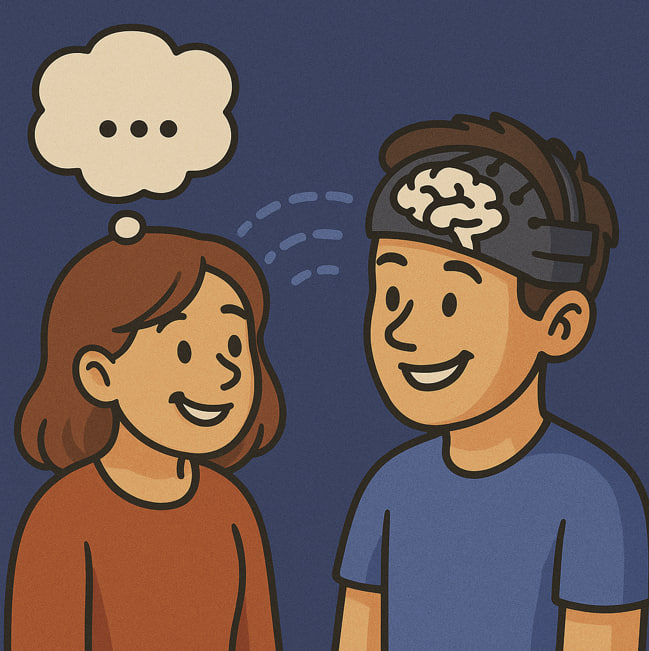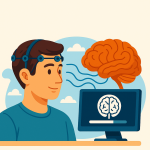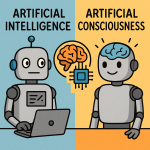The idea of reading thoughts has fascinated humans for centuries — from telepaths in science fiction to dream-sharing in movies like Inception. But what does science actually say about mind reading? Can technology truly decode our thoughts, or is this just futuristic fantasy?
In this article, we explore the current state of neuroscience, brain-computer interfaces, and AI to find out: Is mind reading becoming real?
What Do We Mean by “Mind Reading”?
“Mind reading” can mean different things depending on the context:
- Telepathy — The fictional idea of reading someone’s thoughts without technology.
- Thought decoding — Using scientific tools to detect brain activity and interpret mental states.
- Neurocommunication — Sending signals from one brain to another, potentially without speech or movement.
In science, we’re not talking about magic — we’re talking about neurotechnology and data-driven interpretation of brain signals.
How Science “Reads” the Brain Today
Researchers don’t literally hear your thoughts — but they can measure brain activity using tools like:
EEG (Electroencephalography)
Measures electrical activity from the scalp. Often used in sleep, epilepsy, and attention research.
fMRI (Functional Magnetic Resonance Imaging)
Tracks blood flow in the brain to see which areas are active during specific thoughts or emotions.
Implanted Electrodes
Used in clinical cases or research to get high-resolution signals directly from the brain’s surface or deeper structures.
These tools don’t “read” exact words — but they can detect patterns linked to emotions, images, sounds, or intentions.
Recent Scientific Breakthroughs
1. Reconstructing Images from Brain Scans
In 2023, researchers used fMRI and AI to recreate rough images of what a person was looking at — directly from brain data.
2. Silent Speech Decoding
Some BCIs (Brain-Computer Interfaces) can recognize the brain patterns of imagined speech, allowing paralyzed patients to “speak” through a machine.
3. Dream Tracking
Studies have identified patterns that correlate with visual dream content. In some cases, researchers have guessed the general type of dream a person was having (e.g., moving, seeing people).
4. Brain-to-Brain Interfaces
In rare experiments, signals from one person’s brain have been sent to another’s to perform a simple task — a primitive form of brain-to-brain communication.
Limitations (Why We Still Can’t Read Minds)
- Complexity of Thoughts: Thoughts are not stored as words in the brain; they’re patterns across billions of neurons.
- Personal Differences: Brain patterns vary between individuals — what “love” looks like in one brain may differ in another.
- Noise and Accuracy: Even the best systems today are low-resolution and rely on machine learning guesswork.
- Ethical Barriers: Privacy concerns limit experiments, and for good reason.
In short: we can guess patterns, decode intent, and reconstruct impressions — but we cannot yet read inner monologues or private thoughts with precision.
Future Possibilities: How Far Could This Go?
With advances in:
- Neural decoding algorithms
- Quantum sensors
- AI language models
- Non-invasive BCI tools
…it’s possible that in the coming decades we’ll be able to:
- Detect basic emotions and intentions with high accuracy
- Communicate silently between humans and machines
- Translate imagined speech into text or audio
- Share sensory experiences directly (in theory)
But “true” mind reading — like understanding abstract, personal, or moral thoughts — remains out of reach for now.
Ethical and Social Concerns
Mind reading tech raises serious questions:
- Mental Privacy — Should anyone have access to your thoughts?
- Legal Boundaries — Can thoughts be used as evidence?
- Consent and Surveillance — Could governments or companies misuse this tech?
- Identity and Free Will — If thoughts are decoded, what does that mean for autonomy?
Scientists call for strict ethical frameworks, transparency, and democratic regulation of neurotechnologies.
Key Terms Explained
- BCI (Brain-Computer Interface): A system connecting brain signals to a computer for control or communication.
- fMRI: A brain scanning technique that measures changes in blood flow linked to neural activity.
- Neural decoding: Translating patterns of brain activity into recognizable data (like images or words).
- Neuroethics: A field that studies the ethical implications of neuroscience and neurotechnology.
- Silent speech recognition: The process of decoding internally spoken words from brain signals.
Final Thoughts
Mind reading is no longer pure fiction — but it’s not fully real either. Science can detect some mental states, recreate simple images, and even decode imagined speech. Yet we’re still far from reading thoughts the way it happens in sci-fi.
As neuroscience and AI progress, the line between science and science fiction keeps shifting. The biggest challenge won’t be technology — it will be protecting what it means to be human in a world where even our thoughts might not be private.



Let’s make this world a better place to live!